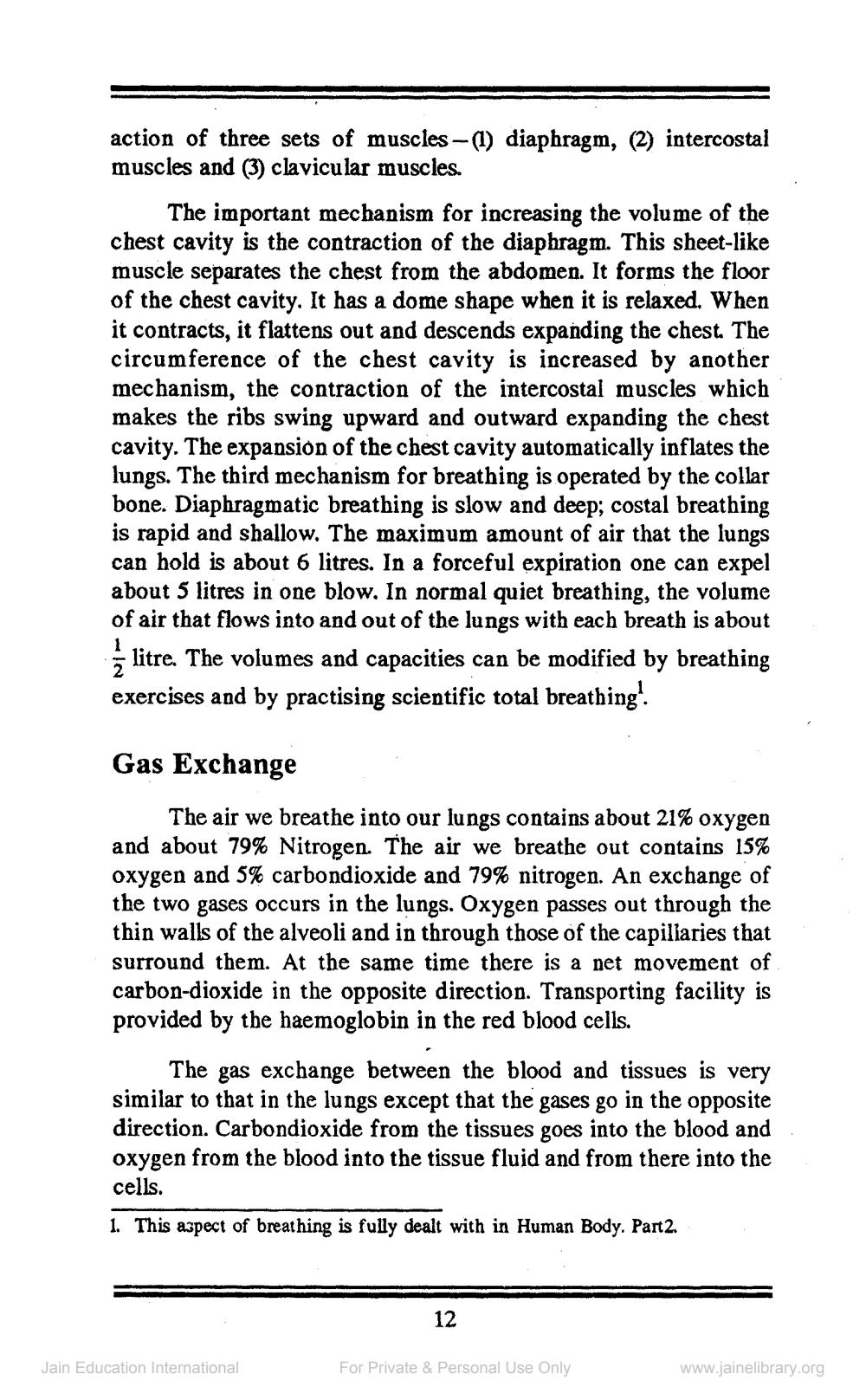________________
action of three sets of muscles - (1) diaphragm, (2) intercostal muscles and (3) clavicular muscles.
The important mechanism for increasing the volume of the chest cavity is the contraction of the diaphragm. This sheet-like muscle separates the chest from the abdomen. It forms the floor of the chest cavity. It has a dome shape when it is relaxed. When it contracts, it flattens out and descends expanding the chest. The circumference of the chest cavity is increased by another mechanism, the contraction of the intercostal muscles which makes the ribs swing upward and outward expanding the chest cavity. The expansion of the chest cavity automatically inflates the lungs. The third mechanism for breathing is operated by the collar bone. Diaphragmatic breathing is slow and deep; costal breathing is rapid and shallow, The maximum amount of air that the lungs can hold is about 6 litres. In a forceful expiration one can expel about 5 litres in one blow. In normal quiet breathing, the volume of air that flows into and out of the lungs with each breath is about
litre. The volumes and capacities can be modified by breathing exercises and by practising scientific total breathing!
Gas Exchange
The air we breathe into our lungs contains about 21% oxygen and about 79% Nitrogen. The air we breathe out contains 15% oxygen and 5% carbondioxide and 79% nitrogen. An exchange of the two gases occurs in the lungs. Oxygen passes out through the thin walls of the alveoli and in through those of the capillaries that surround them. At the same time there is a net movement of carbon-dioxide in the opposite direction. Transporting facility is provided by the haemoglobin in the red blood cells.
The gas exchange between the blood and tissues is very similar to that in the lungs except that the gases go in the opposite direction. Carbondioxide from the tissues goes into the blood and oxygen from the blood into the tissue fluid and from there into the cells. 1. This aspect of breathing is fully dealt with in Human Body. Part2.
12
12
Jain Education International
For Private & Personal Use Only
www.jainelibrary.org




